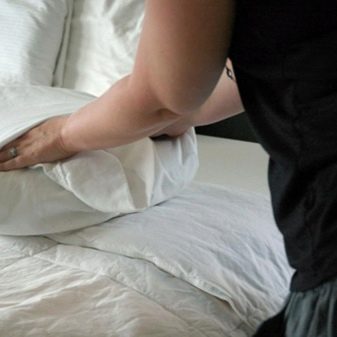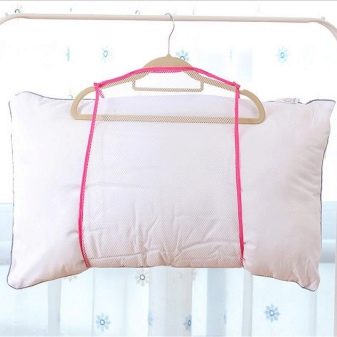Features of down and feather pillows

A warm, comfortable and cozy bed is the main condition for proper sleep. For centuries, people have used pillows filled with natural feathers and down. Even new materials have not diminished the popularity of traditional sleeping accessories at all - these are the ones that will be discussed in our article.
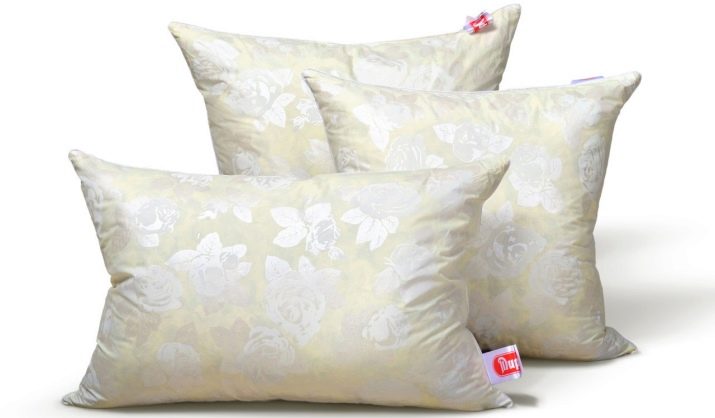
Advantages and disadvantages
Bird feathers and down belong to the material group natural origin. Their quality and performance properties are determined by nature itself, people only adapt them for use in everyday life, including when creating bedding. That's why Down and feather pillows and blankets are chosen by those who prefer environmentally friendly materials.
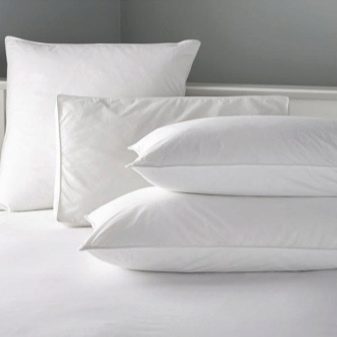
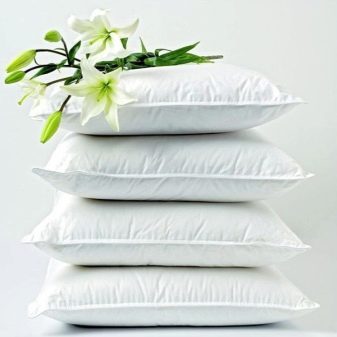
However, this is far from the only advantage of such products. Among the main advantages of a natural filler are the following.
- The convenience of use - feather pillows are distinguished by their lightness and exceptional softness, it is no coincidence that they are sometimes compared to a cloud.
- High thermal insulation - almost invisible air gaps are formed between individual fuzzies, they allow air to circulate freely inside the bedding. This ensures heat retention in bad weather and creates coolness on summer nights.
- Hygroscopicity - natural down effectively absorbs all excess moisture that the sleeping person's skin emits during rest. It evaporates freely, therefore, the body remains dry and therefore does not overcool.
- Elasticity - down and feather filler does not clump.In addition, these pillows have the ability to repeat the shape of the neck and head, and then quickly return to their original appearance.
- Smallness - pillows made of bird feathers and down are characterized by exceptional lightness. This is not surprising: there are from 500 thousand to 2 million fluffs per kilogram of down. This structure provides ease of use, transportation and storage.
- Noiselessness - unlike fashionable products with buckwheat husk, feather and down pillows do not create any sounds, therefore they do not interfere with quiet comfortable rest.
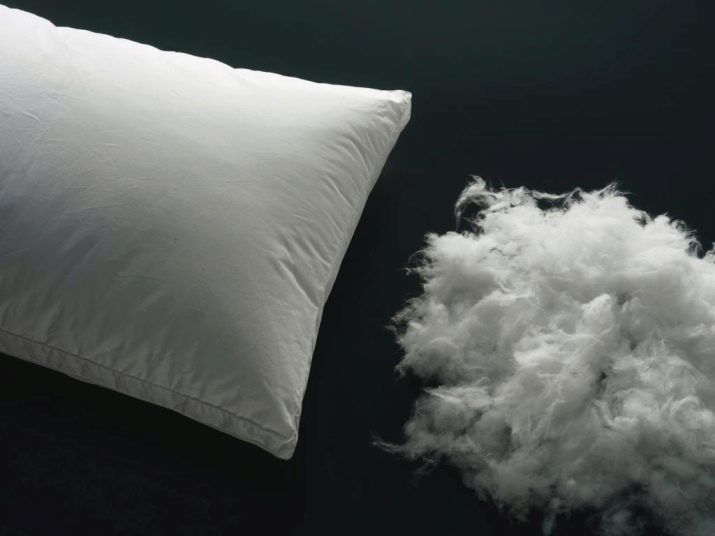
However, feather bedding has its drawbacks.
The products are not suitable for people prone to allergic diseases. Old pillows are dangerous and can become filled with dangerous dust mites over time. Their waste products provoke adverse reactions of the human body.
Like all other environmentally friendly natural materials, a good quality bird down or feather pillow has quite high cost.

Downy sleeping accessories are not easy to care for. If you do not follow the basic recommendations of the manufacturers, then after a year they almost completely lose all their functionality.
Product is too soft unsafe for people who suffer from pathologies of the musculoskeletal system, as well as headaches.
Such a pillow will not provide anatomical support, in this case it is better to give preference to models made of buckwheat husk or latex options.
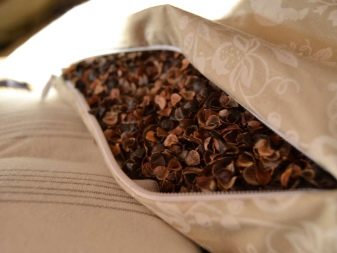

Views
All-down pillows are not cheap. To reduce the cost of products and at the same time give them some rigidity, manufacturers often add small feathers to the filler. The greater the proportion of the latter, the higher, bulkier and tougher the pillow will be and, accordingly, the lower its cost.
Taking into account the percentage of down-feather components, all pillows are divided into down, feather, and down-feather. In the structure of the former, feathers account for no more than 15%, while in the latter they occupy more than half of the total content. Pillows of the third type are filled with bird feathers and down equally.


In our country, the structure of the filler is determined by the approved GOST 30332-2015. In accordance with the regulation, all products are classified as follows.
- Extra - pillows, the proportion of feathers in which fluctuates at the level of 5-10%. These are lush and lightweight products, ideal for users of asthenic physique without physiological pathologies.
- First category - such fillers contain up to 20% of crushed feathers. The products are not tall, quite lightweight and comfortable to use.
- Second category - down here accounts for at least 70%. These pillows are distinguished by medium parameters of elasticity, they conform to the shape of the neck and head, making them comfortable for the rest.
- Half-duff - such a filler contains from 40 to 70% down. These are elastic, high pillows, more rigid, perfectly keep their shape. Used for heavy people with a large physique, they are the most budgetary in this category.
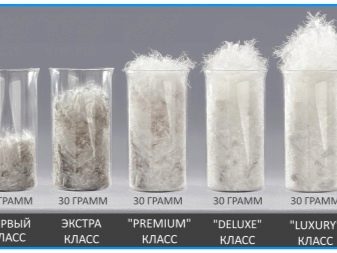
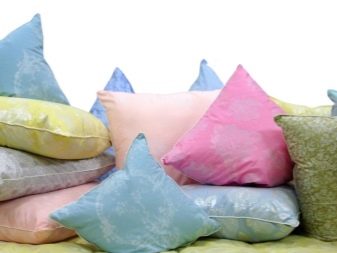
In Europe, other standards for the classification of fillers have been adopted.
- Premium - it contains 90% fluff, and it is exclusively white.
- Highest category - the proportion of down is 70–90%. It can be white or gray.
- First category - here the down component ranges from 50 to 70%. It can be white or gray.
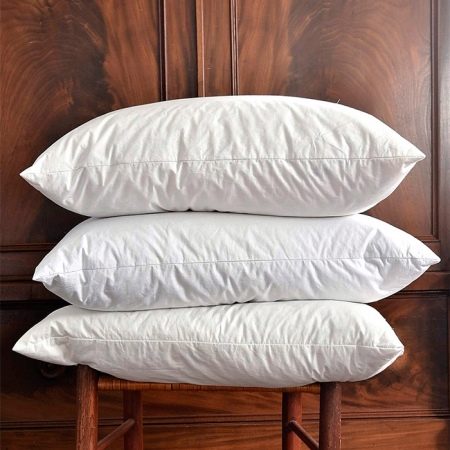
What kind of fluff is used?
When sewing bedding, they usually take the down of waterfowl: loons, as well as domestic ducks and geese. In addition to them, in stores you can find stuffing from swan down, it is of synthetic origin. We pay special attention to the fact that chicken feathers and down are not used as a filler for sleeping accessories, since this raw material is not safe for humans. It absorbs sweat very quickly, and is difficult to clean, decomposes quickly and creates an environment for pathogenic bacteria.

Goose
A very popular option is a pillow filled with down and small goose feathers. It is a resilient, lightweight and highly elastic filler. It is distinguished weightlessness, ergonomics and the ability to maintain the posture of a resting person. That is why such pillows are often bought for children and the elderly.

To create bedding, fluff in white or gray shades is usually used. For models with a gray filler, the cuffs are made rougher so that the shade of fluff does not shine through. For accessories with white down, they take a thinner fabric, but such products are also more expensive.
The disadvantages of goose filler include the risk of pathogenic microorganisms, as well as the likelihood of allergies. It is noteworthy that the properties and price of goose down pillows directly depend on the bird's habitat. The most expensive is the down of Siberian geese - it perfectly retains heat, moreover, it is lighter and more elastic than the rest. Also, the price is influenced by the structure of raw materials - crushed is more valuable.
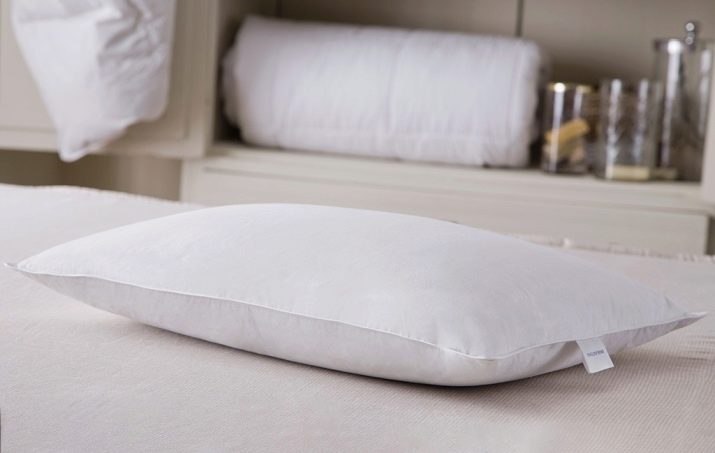
Duck
The most common type of filler is white, as well as gray and mixed. White fluff is much less common, but it looks much more aesthetically pleasing. Accordingly, it is more expensive. Duck feathers and down in bedding have significant advantages, namely:
- ease;
- air permeability;
- softness;
- hygroscopicity;
- affordable price.
Among the disadvantages, vulnerability to dust mites and other indoor parasites is noted. Such products require disinfection and cleaning more than others.
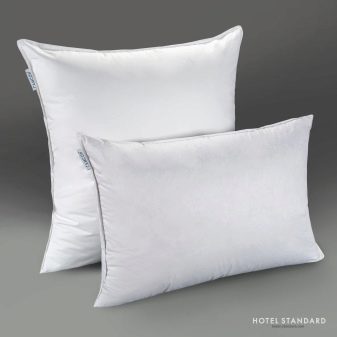
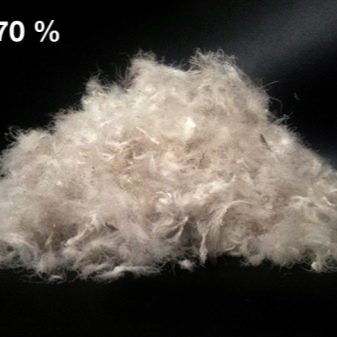
Lebyazhy
There is a misconception that swan down is a raw material obtained from a swan. In fact, this is a material of polymer origin, it is not possible to get fluff from a live bird... In addition, the swan belongs to the heat-loving birds, and there is practically no down in it. And the most important thing - the swan is included in the Red Book as a protected representative of the Russian fauna.Essential fibers are used in the manufacture of swan down. During production, they are twisted so that they form a large number of small spheres.

Due to this, the softness and thermal conductivity of this material are as close as possible in their characteristics to natural raw materials. There are many advantages of products made from swan down:
- they let air through;
- are resistant to moisture;
- do not absorb odors;
- quickly restore their original shape;
- hypoallergenic;
- do not require complex care;
- have a long service life;
- have a democratic value.
And the most important thing - products made from swan down are resistant to the reproduction of pathogenic microorganisms.
Of the shortcomings, they note low absorbency, as well as the accumulation of static electricity.
In addition, swan down is not elastic enough, therefore it is not recommended for people with pathologies of the musculoskeletal system.
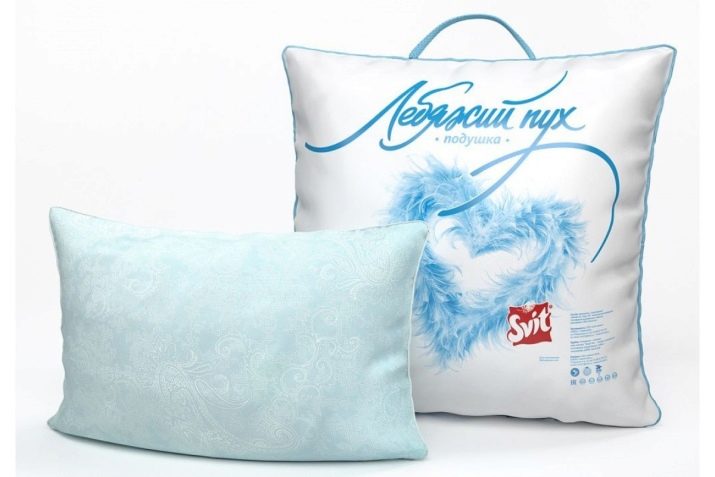
Loons
Eiderdown sleeping accessories belong to the elite segment. The rarest ones are of the highest quality and an impressive price. The advantages of the filler are due to the habitat of the birds. Loons are diving ducks that inhabit the rugged Arctic regions. At the same time, the underpads are collected by hand from bird nests, which is why the material is so rare and expensive.
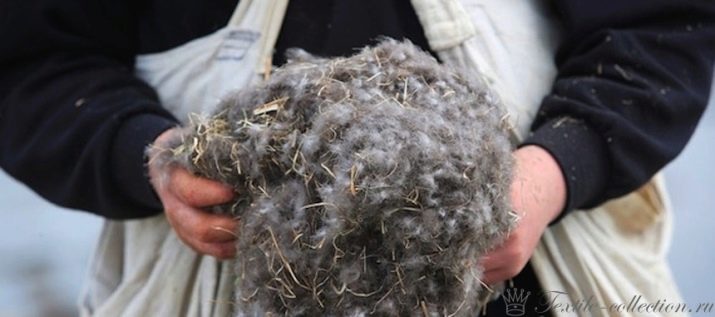
Loon down pillows are very soft and almost weightless. They instantly repeat the pose of a person resting and keep warm for a long time. Moreover, the products have the ability to pass and remove moisture, thereby maintaining the comfort of a resting person. The disadvantages include only the high price, as well as inaccessibility - it can be difficult to find them on the free sale.
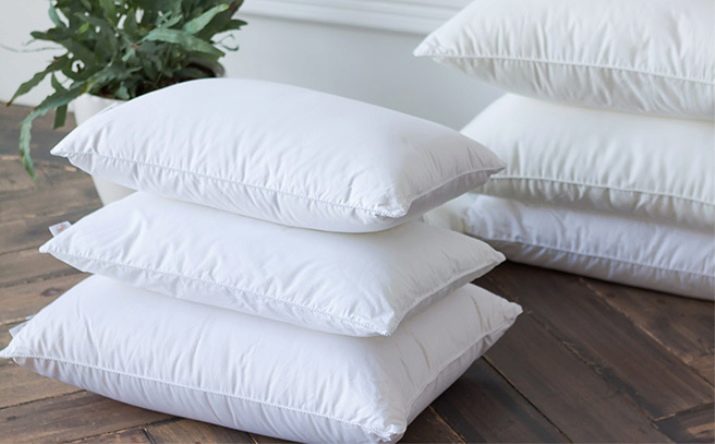
Dimensions and weight
Russian manufacturers produce down and feather pillows in standard sizes: 50x50 cm, 60x60 cm, 50x70 cm, 70x70 cm. Of these, the most widespread are the last two:
- 70x70 - is the Soviet standard;
- 50x70 - refers to European.


Both pillows have the same horizontal parameters, they create the necessary level of comfort. True, the European counterpart is cheaper than the classic Russian version. Children's and decorative pillows are sewn with dimensions of 40x40 or 40x60 cm.
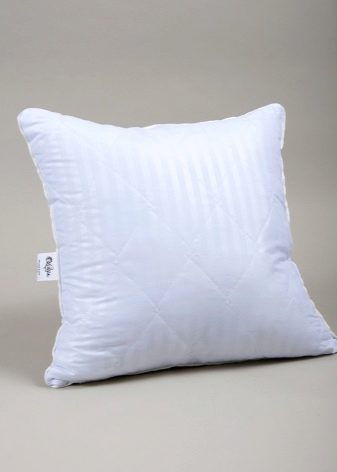
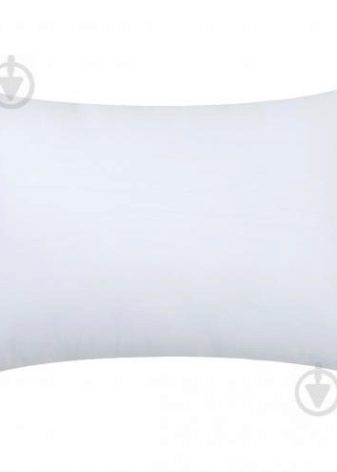
The mass of such a pillow is considered one of the main criteria for product quality. This parameter directly depends on the proportion of feather and down in the finished accessory. For example, a pillow measuring 70x70 cm, consisting entirely of down, weighs about 1.5 kg, down and feathers - from 1.6 to 3 kg, sleeping accessories from only one feather - from 2.5 to 3.5 kg.
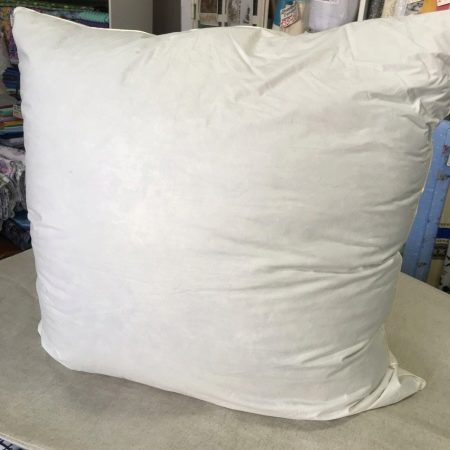
Popular manufacturers
Both experienced manufacturers and young companies are represented on the bedding market. The absolute leaders in the production and sales of down and feather products are as follows.
- TOGAS ROYAL - a company from Greece, started its work in 1926. The pillows of this manufacturer are famous for their exceptional quality, as evidenced by their cost. The price of one product is 10-13 thousand rubles.
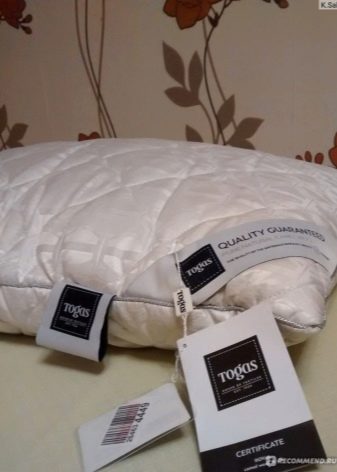
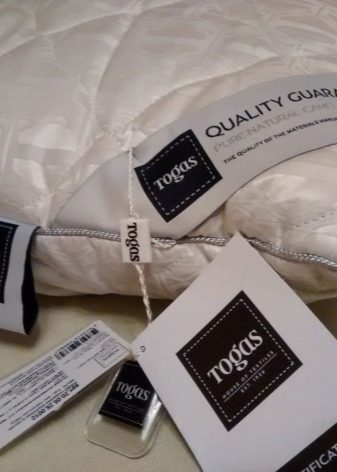
- Sleep Professor Therapy L Is an American company offering quality goose down accessories. The price in retail outlets is 5-7 thousand rubles.
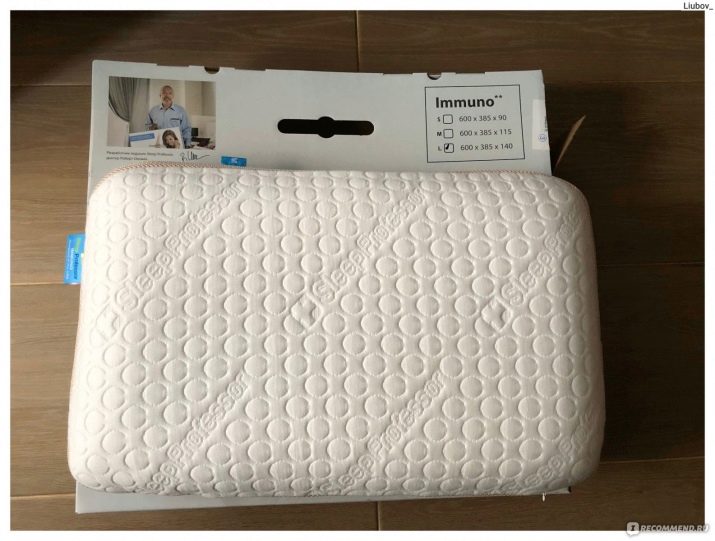
- GRASS FAMILIE - a manufacturer from Austria, produces natural pillows with a three-chamber system. The price tag starts from 7 thousand rubles.
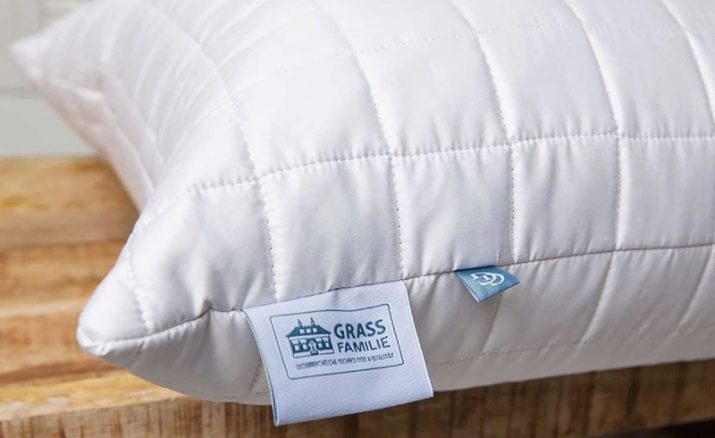
- NPK Kariguz - this manufacturer entered the market in 1991 and immediately established itself as one of the leaders in the production of natural bedding in Europe. Depending on the size, raw materials and other components, the cost of pillows of this brand varies from 1 to 15 thousand rubles.
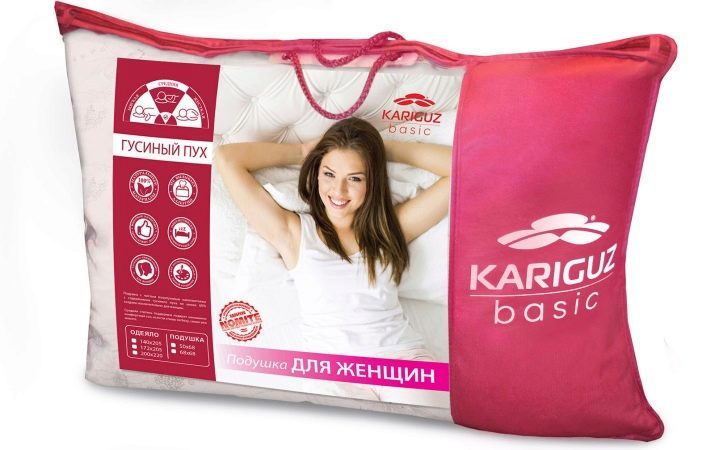
- "Light dreams" - this Russian company has been producing models with swan and goose down for about 10 years. Depending on the amount of stuffing and the size, the price also varies, the cheapest models are estimated at about 3 thousand rubles.
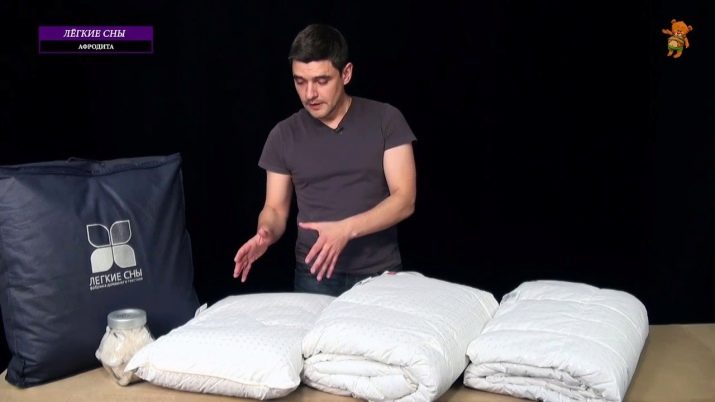
- Belashoff - one of the largest domestic manufacturers of pillows with plant and down fillings. The average price of a finished product is 2 thousand rubles.
According to user reviews, brands can also be included in the rating Dargez, Astra and Mona Lisa.
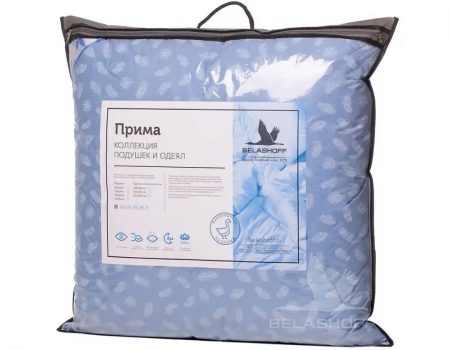
Nuances of choice
When choosing products for sleeping from down and feathers, you need to focus on important points.
- Carefully inspect the product offered to you - you need to make sure that the fluff does not collect into lumps, and there are no voids inside the filler. The napernik should be dense and of good quality. If you notice feathers or fluff coming through, it is better to choose a product from another manufacturer.
- The seams must be strong and straight - this is the main sign of high quality work.
- Remember the pillow in your hands... If you hear crunching and rustling, then the fabric is of poor quality. Such a pillow will not last long.
- Press down on the product and release. The original outlines should be restored in 1.5-2 minutes, while at least 25% should be straightened out in the first half a minute.
- Gently lift the product by the corner and shake it... If it is partially empty on one edge, it means that there is too little stuffing in it, it will be very inconvenient to rest on such a pillow.
- Sniff - the presence of chemical aromas, the smell of dampness or oozing feathers is not allowed.
- Pay special attention to the label... The manufacturer must indicate what material is used and what is the degree of elasticity. The size grid should also be indicated here, the execution technology should be described and advice on how to care for the pillow should be given.

A fundamental role in the selection is played not only by the filler itself, but also by the cover. Most often, they use satin, cotton, as well as silk or muslin. The most popular options are considered with teak cover - this fabric is made from cotton fibers. It is distinguished by tight weaving of threads, as well as a special wax impregnation, due to this, fluff and feathers do not crawl out through the pillowcase. Pillows are very popular European manufacturers with the addition of silver ions, aromatic oils, as well as algae and medicinal herbs.

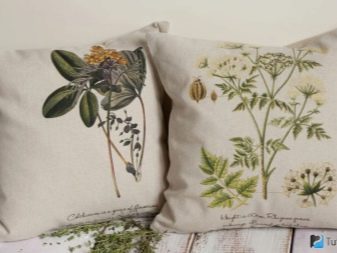
Care rules
Even if the products are of the highest quality, the natural filler will not last long without proper care.
So, let's find out what each of us needs to do.
- Beat the pillow well after each use.
- Freeze the product a couple of times a year.
- Drying in direct sunlight extends the operating period by 1.5-2 times.
- It is important to change your pillowcase regularly.
- You can wash down pillows, usually at temperatures up to 60 degrees.
But keep in mind that it is difficult to rinse out the remaining cleaning agents from the fluff. Therefore, it is best to contact a dry cleaner.
